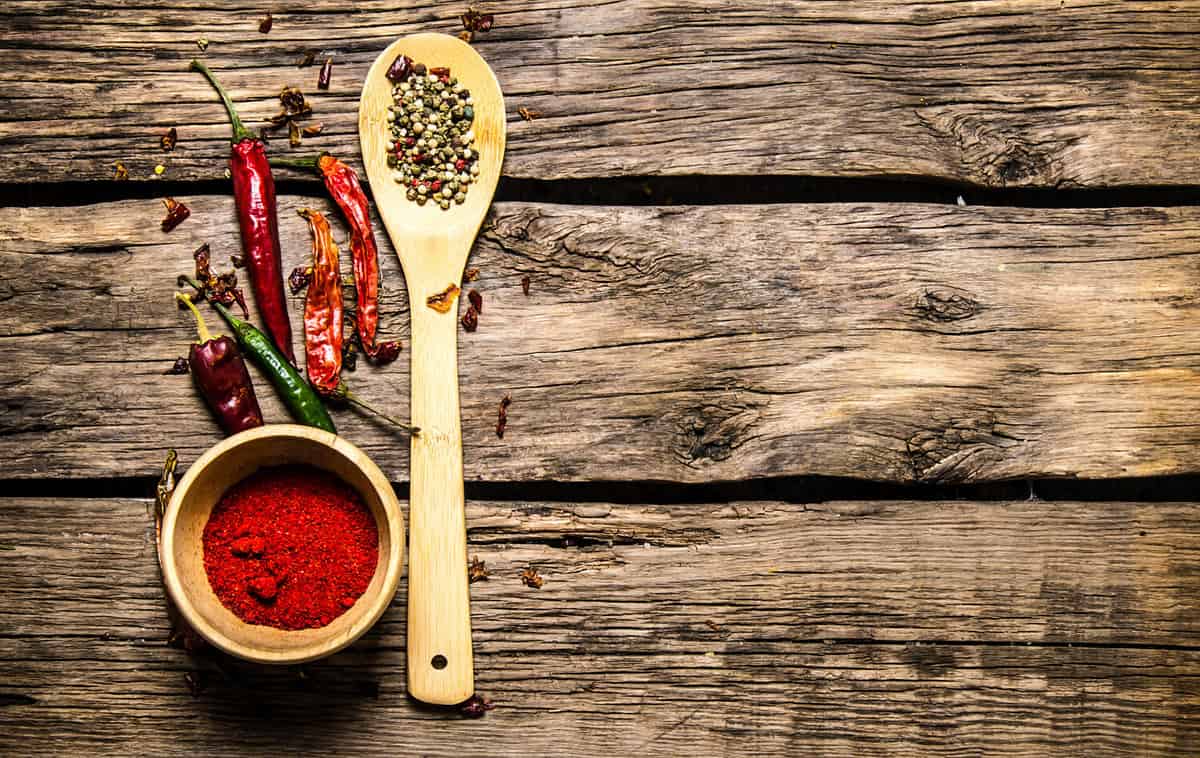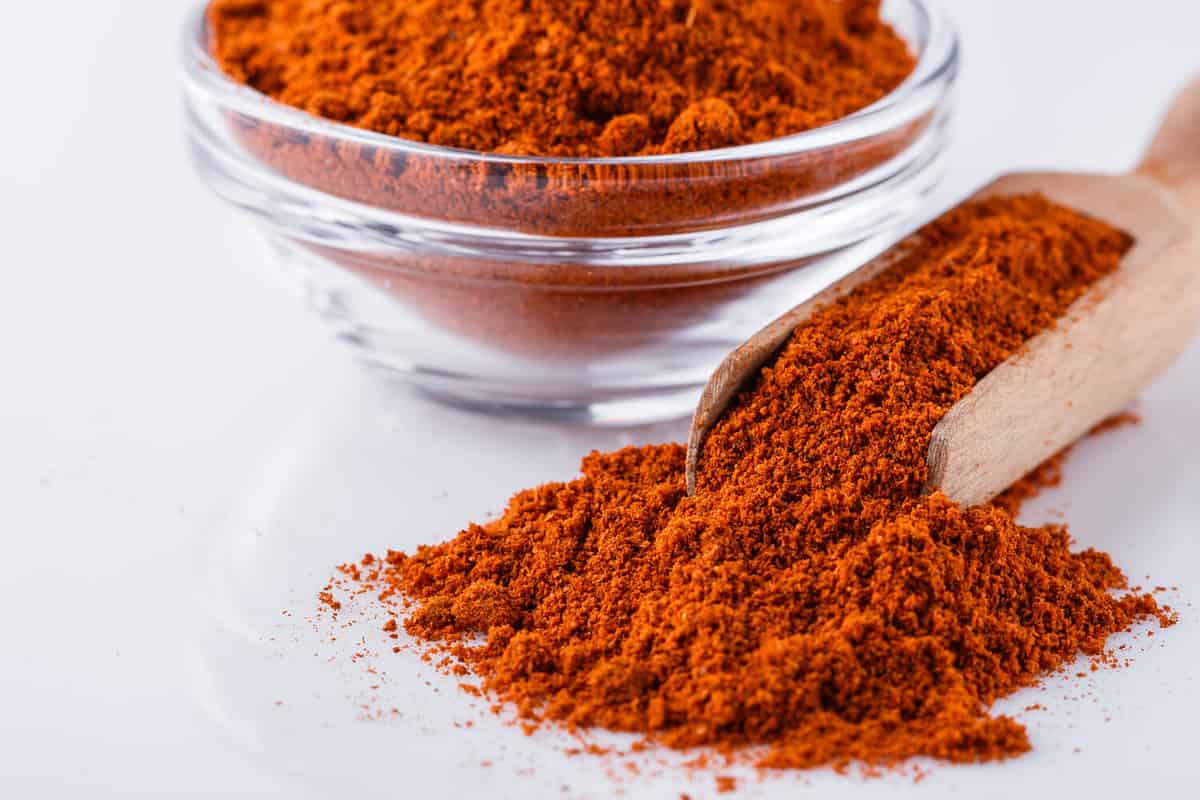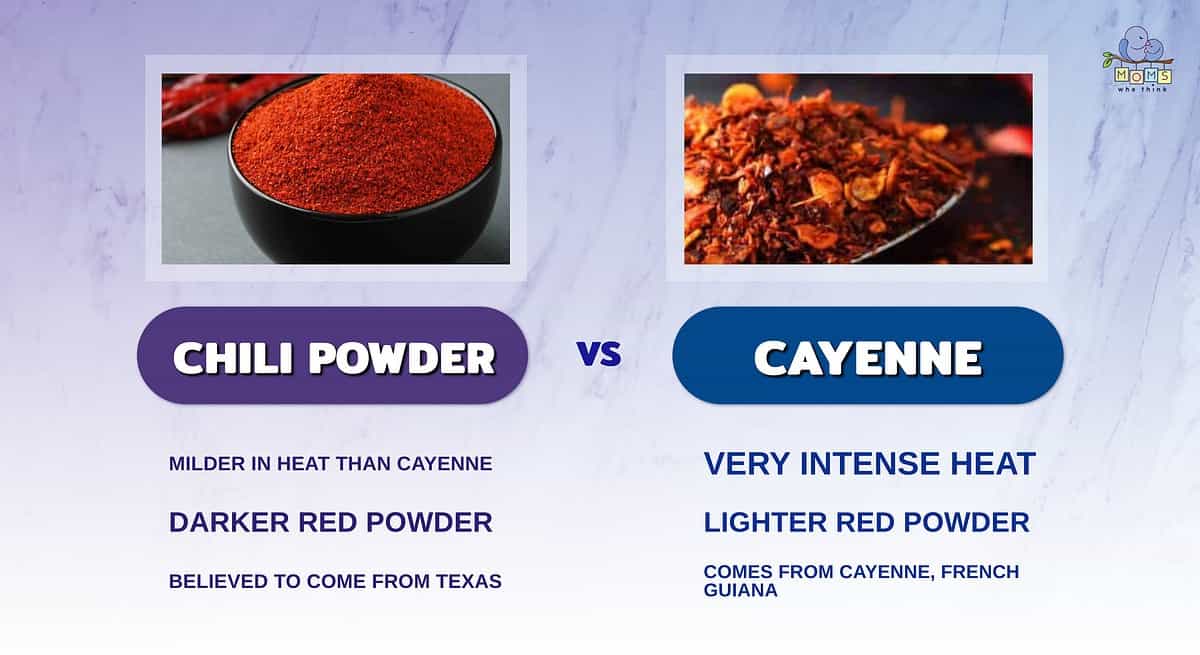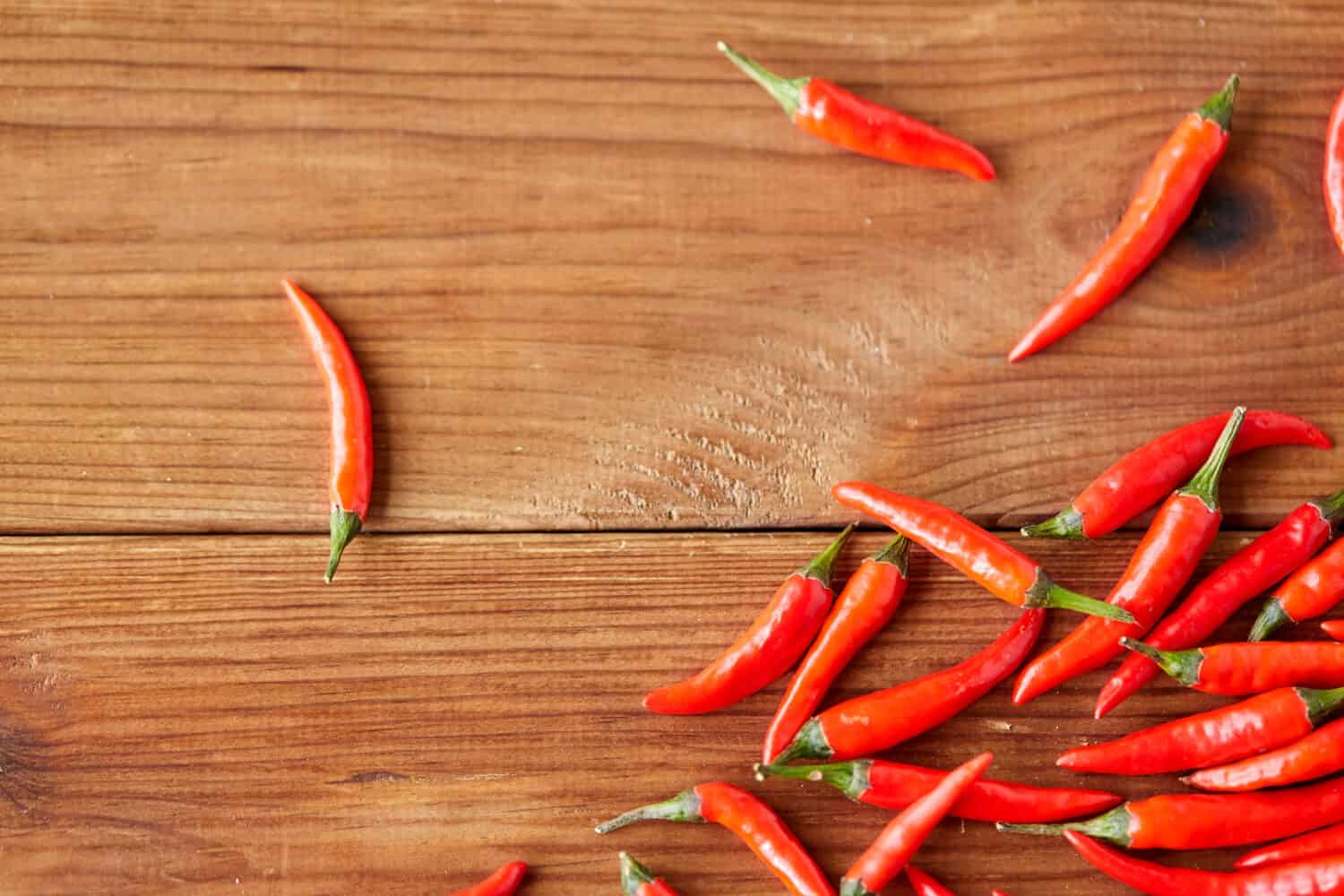Chili powder and cayenne pepper are two spices often found in many kitchens. While similar in look and texture, both have different flavors and additives when cooking a meal. Chili powder and cayenne pepper both are great sources of heat for a recipe. However, the spices are different in intensity and flavor. There are several key differences to know when cooking with these spices.
What is Chili Powder?
Chili powder is a spice that, surprisingly, is not made from chili peppers. Despite people's beliefs that chili pepper is the key ingredient in chili powder, it's a combination of several spices. This spice is made up of several other spices, including cayenne pepper itself for heat, but also it has garlic powder, oregano, paprika, and cumin, too. While chili powder is a great additive for some flavor and heat, it is not all that spicy in a recipe.
History and Origin
Chili peppers have been around for centuries, however, chili powder has not. Due to how chili powder is made, with several other spices, there are a lot of disputed arguments about who was the true creator of the spice. However, many believe that it was invented in Texas, as it's widely used in the south and Texas. A chili historian recalls that the true inventor of chili powder happens to be a German immigrant, William Gebhard. He owned a café in Texas and while cooking different recipes, looked for ways to spice up the food. He created the modern-day chili powder, at first naming it Tampico Dust. Later, in 1896, he opened his factory to mass-produce the product.

©Chatham172/Shutterstock.com
Flavor
Chili powder happens to be a bit milder than other spices that are added to recipes for “heat.” It's made with a portion of other spices, which can be controlled by how much you want to add as the chef.
Color
Chili powder happens to be a dark, red color. The hues in chili powder can be determined by how much of the other spices are added to the mix.
How to Make Chili Powder
Making chili powder is pretty easy, as long as you have the other spices needed. You will need paprika, oregano, cumin, garlic powder, onion powder, and cayenne pepper. The cayenne pepper is optional, depending on how hot and spicy you want the chili powder. Combine 2 tablespoons of paprika and oregano with 1.5 teaspoons of cumin and garlic powder. Then, add .75 teaspoons of onion powder, and cayenne pepper to taste.
Recipes for Chili Powder
What is Cayenne Pepper?
Cayenne pepper is a spice that is made up entirely of dried cayenne peppers. The peppers are dried and then ground up into a powder substance. This spice happens to be extremely hot, much hotter than chili powder. Cayenne pepper is about 8 times hotter than chili powder when used for cooking. Cayenne peppers happen to be hotter than jalepeño peppers, just in comparison in terms of the heat scale.
History and Origin
Cayenne pepper is said to have its origins in Cayenne, French Guiana. However, cayenne peppers grow in various places around the world. The pepper itself comes from a type of Capsicum annuum, which also includes jalepeños and bell peppers. Aside from being a spice used in cooking and food, there are various ways that cayenne pepper is used to help individuals in various ways. Many people throughout history have used cayenne pepper due to its antioxidant properties. This can help heal cells.
Flavor
This specific spice is incredibly hot but has a spectrum of flavor and heat. Cayenne pepper powder has a Scoville heat unit of 30,000 to 50,000, which can be incredibly spicy.
Color
Cayenne pepper powder is red, but not as dark as chili powder. It tends to be a bit brighter in contrast.

©Pedal to the Stock/Shutterstock.com
How to Make Cayenne Pepper
Making cayenne pepper is relatively easy and simple, with a catch. All you have to do is purchase cayenne peppers, wash them, and de-stem them. However, you do need to dehydrate them. Having a dehydrator is important to get them dried out enough to muddle them into the cayenne powder you see in jars and stores. After dehydrating them, you can muddle them, or even grind them in a blender or grinder.
Recipes for Cayenne Pepper:
PrintUltimate Chicken Sandwich
- Yield: 6 servings 1x
Ingredients
6 boneless skinless chicken breast halves (4 ounces each)
1 cup buttermilk
1/2 cup reduced fat biscuit/baking mix
1/2 cup cornmeal
1 1/2 teaspoons paprika
3/4 teaspoon salt
3/4 teaspoon poultry seasoning
1/2 teaspoon garlic powder
1/2 teaspoon pepper
1/4 teaspoon cayenne pepper
6 onion or kaiser rolls, split
6 lettuce leaves
12 tomato slices
Instructions
1. Flatten chicken to ½ inch thickness.
2. Pour buttermilk into a large resealable plastic bag; add chicken. Seal bag and turn to coat; refrigerate for 8 hours or overnight.
3. In a shallow bowl, combine the biscuit mix, cornmeal, paprika, salt, poultry seasoning, garlic powder, pepper and cayenne. Remove chicken one piece at a time, allowing excess buttermilk to drain off. Discard buttermilk. Coat chicken with cornmeal mixture; place in a 13 in. x 9 in. baking dish coated with cooking spray.
4. Bake, uncovered, at 400° for 8 to 12 minutes on each side or until a meat thermometer reaches 170° and coating is lightly browned. Serve on rolls with lettuce and tomato.
Nutrition
- Serving Size: One sandwich
- Calories: 372
- Sodium: 759mg
- Fat: 7g
- Saturated Fat: 3g
- Carbohydrates: 46g
- Fiber: 3g
- Protein: 31g
- Cholesterol: 63mg
The Takeaways

- Chili powder is milder in heat compared to cayenne, making it a safe option for those with a sensitivity to heat.
- You can tell the two apart by their color- cayenne and chili powder are both red, but chili powder is a darker shade of red.
- It is believed that chili powder originated in Texas, while cayenne comes from Cayenne, French Guiana.
Chili powder and cayenne pepper are both spices used to spice up and add heat to a meal. However, when using them in a recipe, there are differences. Chili powder comes with more flavors from the mix of spices involved in its creation. It's also a more mild spice in comparison to cayenne pepper. Cayenne pepper can be extremely hot when used in large amounts. If you're looking for an extra spicy kick, add it to your dinner recipe.
The image featured at the top of this post is ©Ground Picture/Shutterstock.com.


